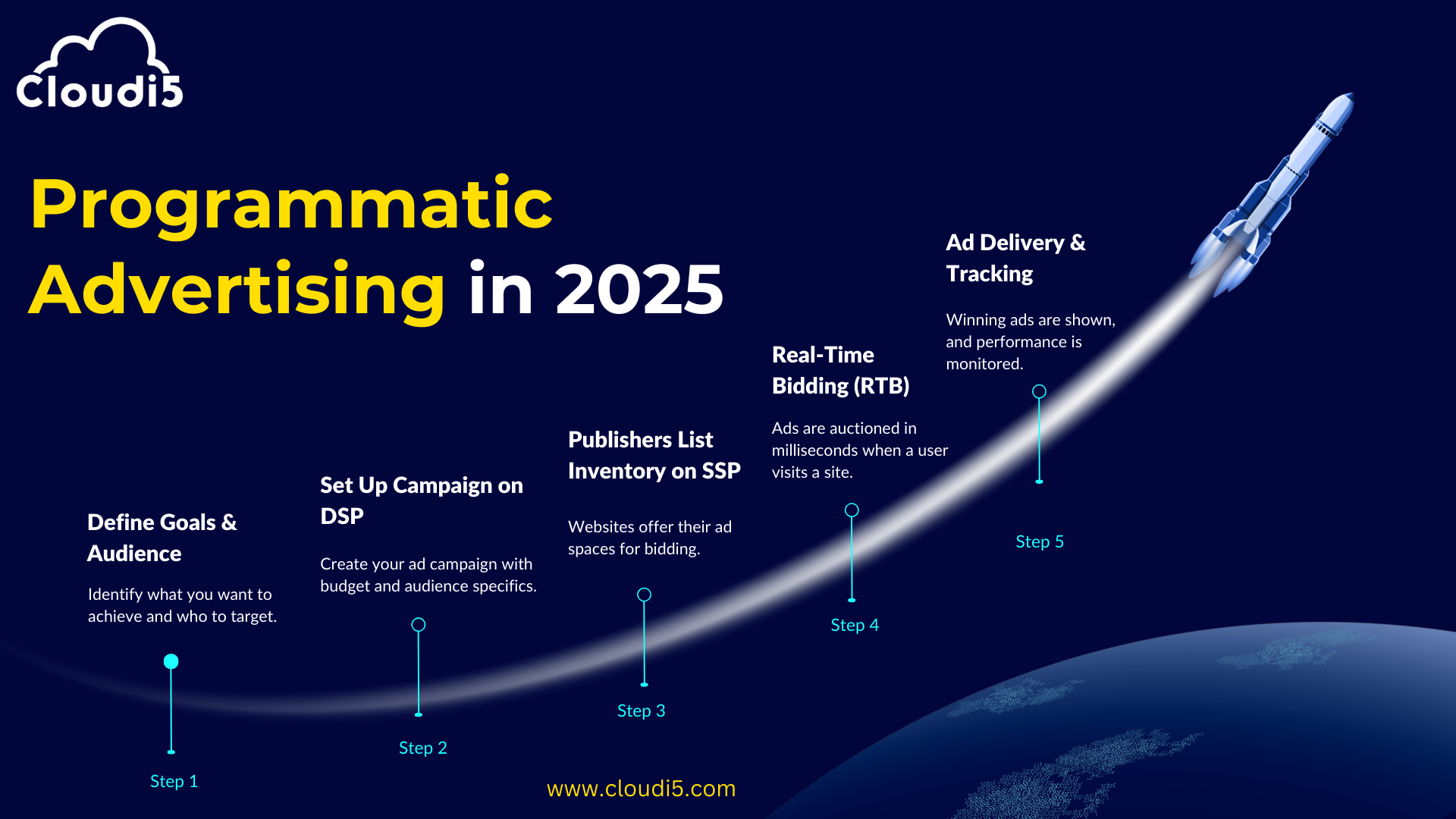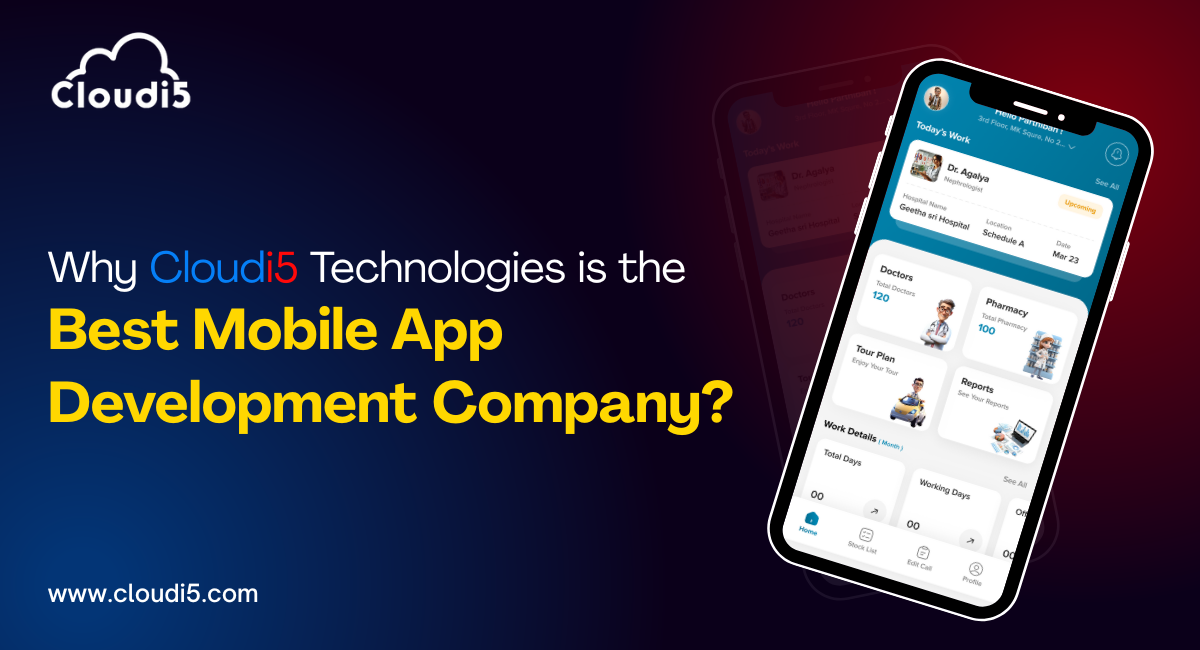
Programmatic Advertising In 2025
Programmatic advertising automates the buying and selling of ad space using software, allowing marketers to target specific audiences and adjust ads in real time.
As digital advertising evolves quickly, staying updated on programmatic trends is crucial for marketers. This article offers tips for navigating the future of programmatic advertising, helping marketers prepare for success in 2025. By understanding key trends and challenges, they can make informed decisions and create effective strategies.
The Evolution of Programmatic Advertising
Programmatic advertising has come a long way since it began. Once a niche tool for buying digital ads, it has now become a key player in the advertising industry.
- Early Years and RTB Adoption: In the early 2010s, Real-Time Bidding (RTB) transformed programmatic advertising, making it faster and easier to buy and sell ad space.
- Data-Driven Targeting: As data analysis improved, marketers began using more consumer data to enhance targeting through techniques like lookalike modeling and predictive analytics.
- Mobile and Video Advertising: The rise of smartphones and video content prompted programmatic advertising to adapt, leading to new tools for effective mobile and video ad placements.
- Cross-Channel Programmatic: Programmatic advertising is now used across various channels, including display ads, video, mobile, and social media, allowing for a consistent message and improved campaigns.
- AI and Machine Learning: AI and machine learning have automated tasks, improved targeting, and optimized campaign results by analyzing large datasets for patterns.
- Privacy and Data Protection: Growing concerns about data privacy have led to new rules, requiring programmatic advertisers to use consumer data responsibly.
Key Components of Programmatic Advertising
1. Demand-Side Platform (DSP): This is the software that helps advertisers manage and optimize their ad purchases across various platforms.
Example: Google Display Ads and The Trade Desk are popular DSPs that help advertisers buy ad space.
2. Supply-Side Platform (SSP): This is the platform that publishers use to manage their ad space and sell it to advertisers.
Example: OpenX and Rubicon Project are SSPs that help publishers maximize revenue by connecting them to multiple DSPs.
3. Ad Marketplaces: These are online platforms where advertisers and publishers can buy and sell ad space.
Example: AdExchanger and AdRoll are marketplaces that facilitate the buying process.
4. Tracking Tools: These tools measure the performance of ad campaigns.
Example: Google Analytics and Adjust help advertisers track clicks, conversions, and other important metrics.
How Programmatic Advertising Works: A Roadmap
1. Ad Created: First, you create your ad. This means designing images and writing catchy text that grabs attention.
Example: A bright banner ad for a new smartphone showing its key features and a special discount.
2. Campaign Set Up: Next, set up your advertising campaign. Decide on your goals, who you want to reach, and how much you want to spend on a programmatic advertising platform.
Example: Using a platform like Google Display Ads, you set a budget of $500 to reach tech-savvy users aged 18-35.
3. Request for Ad Space: After setting up the campaign, the platform looks for available ad space on websites or apps that match your target audience.
Example: The platform sends requests to popular tech blogs and review sites where your audience spends time.
4. Auction Happens: An auction occurs in real-time for the available ad space. This is where programmatic advertising excels!
Example: When users visit a tech blog, the platform triggers an auction for the ad spots.
5. Businesses Bid: Different businesses place bids for the ad space based on how much they are willing to pay to reach the audience.
Example: Several advertisers bid for the spot, with bids between $1 and $3 for each view.
6. Highest Bid Wins: The highest bid wins the auction, and that business’s ad gets shown.
Example: An advertiser bids $2.50 and wins the spot, making their ad appear on the blog.
7. Ad Shown: The winning ad is displayed to the targeted audience on selected websites or apps.
Example: Readers visiting the tech blog see the smartphone ad pop up while reading an article.
8. Results Tracked: After the ad is shown, its performance is tracked. Metrics like clicks, conversions, and impressions are measured to see how well it did.
Example: The tracking tools show that the ad received 1,000 views and 50 clicks.
9. Monitor Performance: Keep an eye on how your ads are performing based on the tracked results.
Example: Using a dashboard on the platform, you see a high click-through rate (CTR) of 5%.
10. Optimize Campaigns: Make changes to improve your campaigns based on the data collected.
Example: You find that users from specific tech forums are more engaged, so you increase your targeting in those areas.
11. Analyze Results: At the end of the campaign, review the overall results to see what worked and what can be improved for next time.
Example: After a week, you find that the smartphone ad led to 20 sales, giving a return on ad spend (ROAS) of 4:1.
Key Trends Shaping Programmatic Advertising in 2025
AI and Machine Learning:
Artificial intelligence (AI) and machine learning (ML) are becoming very important in programmatic advertising. These technologies help with better targeting, improving campaigns, and detecting fraud.
- Enhanced Targeting: AI can look at large amounts of data to find patterns and guess what users will do, leading to better audience targeting.
- Real-Time Optimization: ML can keep checking how campaigns are doing and make changes on the spot to get the best return on investment (ROI).
- Fraud Detection: AI helps find and stop ad fraud, ensuring marketers only pay for real ad views.
Increased Focus on Data Privacy:
Laws like the General Data Protection Regulation (GDPR) and the California Consumer Privacy Act (CCPA) are changing how advertisers work. Advertisers need to respect data privacy and get clear permission from consumers before using their personal information.
- Data Governance: It’s important to have strong data governance practices to follow privacy laws.
- Consent Management: Advertisers must have clear ways to get and manage consent.
- Data Minimization: Collecting only what is necessary and not too much data is crucial.
Omnichannel Strategies:
As consumers use multiple devices and channels, omnichannel strategies are becoming more important. Programmatic advertising helps create smooth campaigns across all platforms.
- Unified Messaging: Keeping messages consistent across all channels helps build a strong brand experience.
- Cross-Channel Targeting: Using data from different channels allows for better targeting and personalization.
- Measurement and Attribution: Tracking how well campaigns perform across channels is essential for improvement.
Programmatic Direct Deals:
While Real-Time Bidding (RTB) has been the main way to buy ads, programmatic direct deals are becoming more popular. These deals are pre-arranged agreements between advertisers and publishers, offering more control and transparency.
- Guaranteed Inventory: Programmatic direct deals ensure access to guaranteed ad space, lowering the risk of missed impressions.
- Premium Placement: Advertisers can get better spots on high-quality websites and apps.
- Customized Targeting: Direct deals allow for more personalized targeting options.
Emerging Platforms:
New platforms and technologies keep appearing, offering fresh chances for programmatic advertising.
- Connected TV (CTV): As more people use CTV, programmatic advertising is growing in this area.
- Social Media: Programmatic advertising on social media is evolving, providing targeted reach and engagement.
- Voice-Activated Devices: As voice search becomes more common, there are new opportunities for programmatic advertising in voice-activated spaces.
By understanding these key trends and adjusting their strategies, marketers can use programmatic advertising effectively to reach their goals in 2025 and beyond.
Marketers' Challenges and Opportunities
Complexity of Programmatic:
- Learning Curve: Programmatic advertising can be confusing. Marketers need to spend time learning how to use new tools and processes.
- Partnerships: Teaming up with experienced agencies or platforms can help marketers understand programmatic advertising better.
Measuring ROI:
- Key Metrics: Marketers should track important numbers like click-through rate (CTR), conversion rate, cost per acquisition (CPA), and return on ad spend (ROAS) to see how well their ads are doing.
- Attribution Issues: It can be hard to figure out which ads lead to sales because customers interact with many ads. Solutions include using data-driven models and tracking across different devices.
Ad Fraud and Viewability:
- Fighting Ad Fraud: Advertisers need to watch out for ad fraud, which can waste money and hurt their campaigns. Using fraud detection tools and working with trusted publishers can help.
- Viewability: Viewability means checking how much of an ad is actually seen by users. Marketers should ensure their ads are seen by the right people.
Consumer Privacy Concerns:
- Data Usage: With stricter privacy rules, marketers must be clear about how they use data and get permission from consumers.
- Building Trust: Gaining trust from consumers is important for long-term success. Marketers should be open and show they care about privacy.
Future Trends:
- New Technologies (e.g., Voice, AR/VR): New tools like voice search and augmented reality (AR) will change advertising. Programmatic advertising needs to keep up with these changes.
- Impact on Programmatic Advertising: New technologies bring both challenges and opportunities. Marketers need to stay informed and find ways to use these tools effectively.
Best Practices for Programmatic Success
1. Setting Clear Objectives
- Align Goals: Ensure your programmatic advertising supports your overall marketing goals and helps achieve your business aims.
2. Data Quality and Governance
- Data Accuracy: Focus on keeping your data accurate and safe. Use strong management practices to protect privacy and follow regulations.
3. Continuous Optimization
- A/B Testing: Experiment with different ad formats, targeting methods, and messages. Regularly check campaign performance and make data-driven changes.
4. Measurement and Analysis
- Track Key Metrics: Monitor important metrics like click-through rates, conversion rates, cost per acquisition, and return on ad spend.
- Use Insights: Analyze data to find trends and improve targeting and campaign results.
5. Building Internal Capabilities
- Develop Skills: Train your team in programmatic advertising or partner with experienced agencies for specialized help.
6. Staying Updated on Industry Trends
- Follow the News: Keep up with the latest trends and technologies by reading industry news, attending conferences, and joining online communities.
Additional Best Practices for 2025
1. Invest in Data: Good data is essential for successful programmatic advertising. Spend on data collection, management, and analysis for better results.
2. Adapt to Change: Be ready to adjust your strategies as the programmatic landscape evolves.
3. Focus on Creative Content: Create eye-catching and relevant ads to grab attention and drive results.
4. Educate and Train Teams: Ensure your team knows how to effectively manage programmatic campaigns. Offer training to keep them updated on new tools and technologies.
Conclusion
Programmatic advertising is rapidly evolving, presenting challenges and opportunities for marketers. As we approach 2025, it's essential to recognize trends like AI, data privacy, and new advertising platforms.
By understanding programmatic advertising and adopting best practices, marketers can effectively address challenges and improve campaign success. Investing in quality data and staying informed is crucial. With promising new technologies ahead, staying open to innovation will help marketers thrive in the coming years.
Trusted By












Leave Comments